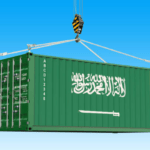- Home
- Market Trends
- OPEC+ and the continuing oil o ...

The Organization of Petroleum Exporting Countries and its partners (OPEC+) are entering uncharted territory.
Saudi Arabia and its allies are now dealing with a new market after spending the previous two years gradually resuming idle oil output in the post-pandemic world.
The preeminent narrative in recent months is that pressure from important customers like the US would reduce inflation by increasing supply. However, it is now changing toward worries about a recession in the world economy.
This article will be helpful to you if you are interested in global energy and the prices of oil. Keep reading if you are interested in how things like OPEC+ affect oil outputs and other vital issues.
You can view also view information on Vietnam in here on our platform: https://data.cic-tp.com/asia-trade-data/vietnam-import-export-data
The need for output cuts
Riyadh has stated that an output reduction may be required in light of recent gyrations, notably a loss of more than 20% in Brent oil since early June.
OPEC+ anticipated maintaining stable output when they meet on Monday in light of the current state of unpredictability. Despite this, Saudi Arabia’s energy minister, Prince Abdulaziz bin Salman enjoys surprising onlookers, and OPEC+ delegates quietly assert that all possibilities are open.
“OPEC+ has a greater need to consider a widened range of scenarios at this meeting,” said Christyan Malek, global head of energy strategy at JPMorgan Chase & Co.
“It’s an environment of heightened macroeconomic volatility led by conflicting data points on demand and recession. But it’s also a tightening oil market, with supply uncertainties from Libya to Iraq.”
The enormous windfall enjoyed by the Saudis and their allies is in jeopardy as oil prices have completed their longest decrease since 2020.
While the US has avoided recession, China, the world’s largest oil consumer, has shown symptoms of an “alarming” economic downturn. The restart of nuclear negotiations, which affects an OPEC member, Iran, may restore crude exports from that country.
Find the exact product you are interested in here at https://tradedata.pro/trade-database-demo/
Output reductions for restoring market balance
Saudi Arabia’s Prince Abdulaziz stated last month that additional output limitations might be the most effective way to restore balance as a result of the ensuing price volatility. Prince Abdulaziz claimed that oil futures have become disconnected from the reality of supply and demand. Other OPEC+ members enthusiastically approved this statement.
He shared, “The market is in a state of schizophrenia, and this is creating a type of a yo-yo market,” the prince said in an interview on August 22. “OPEC+ has the commitment, the flexibility, and the means” to “deal with such challenges.”
Oil demand
The global oil demand outlook is expected to grow in the long term, but there are signs that it may contract in the short term. In fact, all signs point toward lower oil demand growth over the next few years:
- Oil output from non-OPEC countries has fallen by more than 2 million barrels per day since 2008. This decline has contributed to a reduction in overall global supply and helped contribute to higher prices during periods of high economic growth (like now).
- China’s energy consumption increased by nearly 50% between 2005 and 2015—and is projected to double again by 2025. It will likely continue growing at this pace even after 2020 as its economy expands faster than expected due to its reliance on coal rather than natural gas or renewables like solar or wind power; this shift away from other sources could lead to China’s overall carbon footprint down slightly but not enough so that it would make much difference if we were trying to save ourselves from climate change.
Oil markets
Oil prices are an essential part of the energy equation and are directly related to demand, supply, and oil output levels. The price of oil is determined by both supply and demand in the market, but OPEC+’s decisions can compound this effect on production levels.
The current level of global oil inventories is relatively high compared to past decades; however, there are many factors that could impact future prices:
- The availability of alternative fuels like natural gas or renewables (wind/solar) may reduce demand for petroleum products due to their lower emissions rate than traditional fossil fuels like coal or gasoline;
- Technology improvements such as electric cars encourage people away from buying gasoline-burning vehicles which increase demand for gasoline at retail outlets;
- Global economic growth rates could increase demand for imported goods, leading manufacturers overseas to produce more goods than they would otherwise be able to without these imports coming into play.
We have seen a lot of volatility in the oil market over the past few years. The price of Brent crude has gone up and down, but what is the driving force behind this? One reason might be that OPEC+ is trying to influence the price of oil by putting quotas on its members’ production levels.
Oil stocks in Singapore
As for Singapore, just last month, despite a decline in weekly net import volumes, the nation’s residual fuel oil stockpiles increased to a 19-week high on Thursday, according to official figures, as the Asian market continued to be glutted with supplies.
For three weeks in a row, fuel oil stockpiles increased, adding to the recent decline in fuel oil cash premiums’ pessimistic market mood.
Data from EnterpriseSG stated that in the week ending August 31, the stocks increased 7% to 22.67 million barrels (3.57 million tonnes).
According to Roslan Khasawneh, senior fuel oil analyst at oil analytics firm Vortexa, “The stocks are supported by higher Russian fuel oil flows to markets in the East, away from the West amid mounting sanctions, as well as increased regional refinery turnarounds and slowing gasoline demand which has freed up blend stock supply for export.”
Despite falling 2% week over week to 784,000 tonnes, Singapore’s average weekly net fuel oil imports increased over the previous month. According to the report, weekly net import volumes have increased from 526,000 tonnes in July to 707,000 tonnes last month.
According to the most recent estimates by Refinitiv Oil Research, total fuel oil flows into East Asia, the majority of which go to Singapore, were at roughly 5.05 million tonnes for August as opposed to 3.89 million tonnes in July.
The price of fuel oil has fallen dramatically in recent weeks due to increased regional Asian supply and an influx of Western arbitrage barrels, with premiums for extremely low sulphur fuel oil falling by more than 90% through August.
To find out more about accessing a new market, you can check out this article which shows you how to use Trade Data Pro to access Global Trade Markets: https://blog.tradedata.pro/say-hello-to-our-new-release-of-tradedata-pro/
Singapore trade forecast for oil
For the second time this year, the country substantially increased its full-year trade predictions on August 11, as the second quarter’s performance, which was led by the electronics and oil industries, exceeded expectations.
The country’s oil trade forecast is expected to be a bright spot for investors who will benefit from higher oil prices and rising demand for refined products such as gasoline or fuel oil used by ships and power plants around Asia’s busiest port city-state.
Enterprise Singapore estimates that total commerce will expand by 15–16% instead of 8–10% in 2022. The growth forecast for non-oil domestic exports (NODX) has increased from 3-5% to 5-6%.
The Singaporean government has a number of policies in place to ensure the country’s economic growth. One of these is its strong support for the oil and gas industry, which led to a significant increase in exports from Singapore in 2017.
As a small country, Singapore needs to import a lot of oil as well as other raw materials for its manufacturing sector. This means that it will likely continue investing heavily in this sector over time if it wants to maintain its status as an essential part of global trade.
Singapore also has a large refining capacity—a result of decades worth of investment into this area—and therefore generates substantial revenues through exports such as gasoline or diesel fuel produced domestically but sold overseas instead.
When EnterpriseSG posted its Q1 trade performance report in May, these forecasts were updated.
The agency predicted, “Since the last update, both total merchandise trade and NODX grew better-than-expected in Q2 2022. Higher oil prices and robust global semiconductor demand are likely to continue in 2022.”
However, they cautioned that there is still uncertainty, with substantial risks, including inflation, a faster-than-expected recession in China, and more spill over effects from the Russia-Ukraine war.
TradeData.Pro is an award-winning platform for trade data. If you want to sharpen your skills on oil markets, TradeData.Pro can help you with its shipment and customs data that are obtained and examined from import-export businesses in over 220+ countries.
For more market news and trends, check out our resources here.
To find out more about accessing a new market, you can check out this article which teaches you how to use to access Turkey markets: https://blog.tradedata.pro/why-you-should-be-importing-from-turkey-in-2022/
The most trustable and reliable source for Trade Data.
Trade Data Pro is proudly made in Singapore. Singapore has been one of the world’s most politically stable countries, with an open and trade-driven economy. Trade Data Pro is presented by CIC, a government-linked company in Singapore CIC is a Join Venture of Zall Smartcom, SGX and GeTS.)
Since the launch of Trade Data Pro in 2018, Trade Data Pro has received overwhelmingly positive remarks from market. This is because Trade Data Pro has wide coverage, low cost, and fast response. There are many leading companies from different industries that have subscribed to Trade Data Pro .
Trade Data Pro was awarded with Singapore Quality Class in 2020 and Stevie Award Gold in 2021. Businesses need information to reveal trends, identify market opportunities, track competitors buyers and suppliers, and better understand supply chain potential.
Finding these critical data has traditionally been challenging. But this information do exist, but as part of government import and export filing requirement. The detailed shipment information which are within these filings constructions the core of the global trade.
Trade Data Pro has gathered and packaged these information as business intelligence. Our solution helps companies understand the flow of goods across borders and features the world’s largest searchable trade database. We do the heavy lifting for you by reviewing, standardising, and cleaning data, then delivering in an intuitive format.
Learn how TradeData.Pro works by watching the video below! View here on Youtube as well: https://youtu.be/QQ9wG-CesI8
Business China Commodities Consumer Goods Economy Energy Export Global International Trade Markets Prices Worldwide
Leave a Reply Cancel reply
Recent Posts
- Saudi Arabia Exports of Crude Oil Go Down As Diesel Rises
- Finest Mangoes and Rare Litchi Now Headlining India Exports to UAE
- Japan Imports and Exports Reeling and Rising From US Tariffs
- Upsurge for Exports of Thailand: Agriculture and Electronics
- Indonesia Exports: Sunny Outlook Despite Coal, US Challenges
Archives
- August 2025
- July 2025
- June 2025
- May 2025
- April 2025
- March 2025
- February 2025
- January 2025
- December 2024
- November 2024
- April 2024
- March 2024
- January 2024
- December 2023
- November 2023
- October 2023
- September 2023
- August 2023
- July 2023
- June 2023
- May 2023
- April 2023
- March 2023
- February 2023
- January 2023
- December 2022
- November 2022
- October 2022
- September 2022
- August 2022
- July 2022
- June 2022
- May 2022
- April 2022
- March 2022
- February 2022
- January 2021
Categories
Recent Post
Saudi Arabia Exports of Crude Oil Go
- August 25, 2025
- 13 min read
Finest Mangoes and Rare Litchi Now Headlining
- August 21, 2025
- 9 min read
Japan Imports and Exports Reeling and Rising
- July 31, 2025
- 15 min read
All Tags
Agriculture Automotive Brazil Business Business Opportunities Buyers China Coffee Commodities Crops Ecommerce Economic Economy Electronics Energy Environmental Europe Export Exports Future Garments Global Import India Industries International Trade Leads Leads Generation manufacturing Markets Opportunities Pharmaceuticals Prices Rice Russia Supplier Textiles Trade Trade Data Trade Data Pro Turkey Ukraine United States Vietnam Worldwide









One reply on “OPEC+ and the continuing oil output dilemma”
[…] projections indicate a rise in oil use over the world. Overall, the EIA’s STEO report suggests that the U.S. energy sector will […]